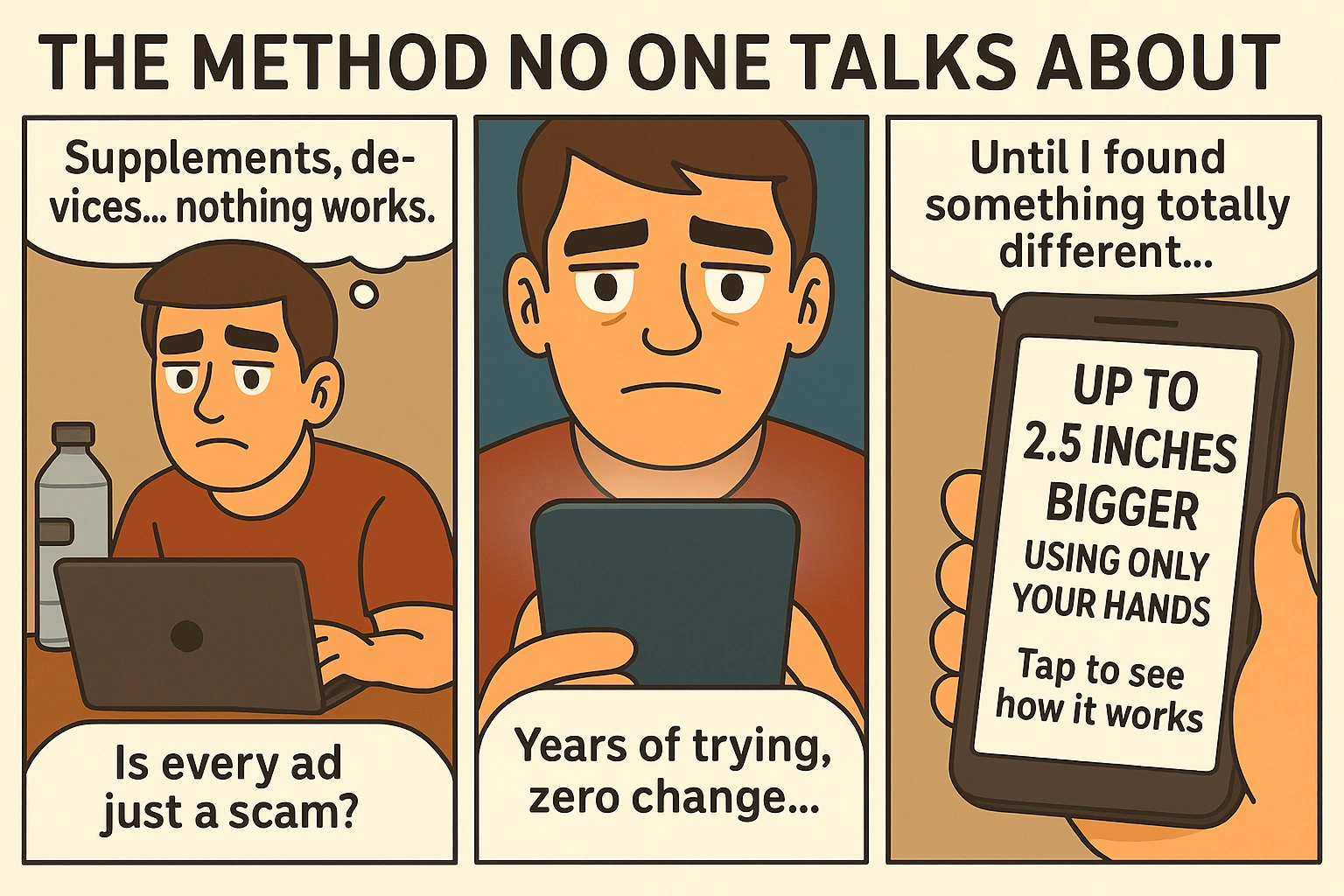🚨 These Cardio Mistakes Are Castrating Your Testosterone (Without You Realizing)
Many men hit the treadmill daily thinking they’re improving their health — but what if some of those cardio habits that destroy your testosterone are silently sabotaging your manhood? While cardiovascular exercise is essential for overall health, doing it wrong can backfire in ways that directly affect your hormones, stamina, and sexual drive.
Too Much Cardio Can Lead to Hormonal Burnout
Endless hours of steady-state cardio — like jogging for 60+ minutes daily — can spike cortisol, the stress hormone. Elevated cortisol suppresses testosterone production, leading to fatigue, muscle loss, and lower libido. Balance is key.
Running on Empty: Fasted Cardio Mistakes
Doing intense cardio first thing in the morning without fuel may sound hardcore, but it often leads to muscle breakdown and hormone imbalances. Fasted cardio increases cortisol and depletes the amino acids your body needs to support testosterone levels.
Chronic Endurance Training = Low T
Men who train for marathons or long-distance cycling often experience a drop in testosterone over time. The body adapts to high-volume training by conserving resources — and unfortunately, testosterone is one of the first to drop.
Neglecting Resistance Training
Cardio alone doesn’t boost testosterone. In fact, if you’re not lifting weights or doing bodyweight resistance work, you’re missing out on the most effective way to stimulate natural testosterone production. Strength training boosts T far more than running ever will.
Poor Recovery Kills Gains and Hormones
Without enough sleep, proper nutrition, and recovery time, cardio becomes destructive. The body perceives constant movement as stress — and stress is the enemy of testosterone. Recovery is not a luxury; it’s a testosterone-saving necessity.
How to Do Cardio Without Wrecking Your Hormones
The goal isn’t to eliminate cardio — it’s to structure it smartly. Here’s how to make cardio work for your testosterone:
- Limit sessions to 20–30 minutes: Especially moderate-intensity workouts
- Focus on HIIT: High-Intensity Interval Training increases testosterone when done right
- Combine with strength training: This synergy boosts hormonal response
- Never train on empty: Eat a light meal or shake before cardio
- Prioritize recovery: Sleep 7–9 hours and eat enough healthy fats
Signs Your Cardio Routine Is Hurting You
Here are red flags that your current cardio habits are destroying your testosterone:
- Loss of morning wood or weak erections
- Persistent fatigue or poor sleep
- Muscle loss despite working out
- Lack of drive, motivation, or libido
- High resting heart rate and anxiety
What to Do Instead
Try swapping excessive running for sprints, jump rope, rowing, kettlebell swings, or incline walks. These forms of cardio improve circulation and heart health without overtaxing your hormones.
Want to boost the effects? Combine cardio-smart habits with the right diet — check out our guide to foods that stimulate blood flow to genitals and build a full-body plan.
To take your transformation to the next level, unlock the full natural testosterone protocol here.
Cardio vs. Testosterone: Understanding the Science
Research shows that excessive endurance training leads to a condition called “exercise hypogonadal male condition.” This is where testosterone levels remain suppressed over time due to chronic overtraining. While this may be ideal for endurance athletes, it’s a nightmare for the average man wanting high libido, muscle growth, and confidence.
Testosterone isn’t just a sex hormone — it regulates energy, mood, fat-burning, muscle mass, and motivation. If your cardio habits are draining your T levels, you’re weakening your performance in all areas of life.
The Role of Cortisol in Cardio
Cortisol is essential in small doses — it helps with fat-burning and inflammation control. But when cardio is overdone or recovery is poor, cortisol levels remain elevated. Chronically high cortisol not only kills testosterone but also promotes fat storage, especially around the belly — another sign of hormonal imbalance.
How to Lower Cortisol Naturally
- Limit cardio to 3x per week
- Sleep deeply and consistently
- Eat enough carbs to refuel post-workout
- Include rest days in your routine
- Use magnesium and ashwagandha as natural cortisol regulators
Smart Cardio Routines That Support Male Hormones
Instead of punishing your body with endless miles, create a weekly structure that boosts testosterone and stamina:
- Day 1: Strength training + 10-minute HIIT finisher
- Day 2: Rest or active recovery walk
- Day 3: Sprint intervals (10–15 minutes total)
- Day 4: Upper body strength + light cardio
- Day 5: Core + functional mobility
This format provides the metabolic benefits of cardio without destroying your hormones.
Stack Your Routine With Sleep & Recovery
Even with the perfect cardio plan, it won’t work without proper recovery. Sleep is where your testosterone is produced — mostly during deep sleep. If you’re not sleeping 7–9 hours, you’re undermining your entire routine.
Get our best sleep hacks to optimize hormone production and make rest a weapon in your transformation journey.
Fueling Cardio with Testosterone-Supportive Foods
To maximize your cardio results and hormonal response, fuel your body with the right nutrients. Healthy fats (like eggs, avocado, olive oil), quality protein, and key minerals (zinc, magnesium, selenium) are critical for testosterone.
Eating strategically before and after cardio can prevent the hormonal crash. For more ideas, check our guide on how to avoid energy crashes in men.
Real Case: The Runner With Low T
One study published in the Journal of Clinical Endocrinology & Metabolism followed endurance athletes and found that those with the highest cardio volumes had the lowest testosterone. The correlation was strong — the longer and more frequently they trained, the more their hormone levels plummeted.
This isn’t limited to elite athletes. Everyday men trying to “stay in shape” by running daily often report lowered libido, plateaued muscle growth, and chronic fatigue — all signs of hormonal imbalance caused by poor cardio strategy.
Mistakes Most Men Make With Cardio
If you’re doing any of the following, it might be time for a testosterone check:
- Running long distances more than 4x a week without resistance training
- Skipping meals before cardio
- Overtraining with no scheduled rest days
- Using cardio to “punish” yourself for overeating
- Using cardio as your only form of exercise
Myths That Ruin Male Performance
Let’s bust some common myths around cardio and testosterone:
- “Cardio is always good for you.” — Not if it’s causing hormonal collapse.
- “You have to run to stay lean.” — HIIT and strength training are far more effective.
- “Fasted cardio burns more fat.” — It burns muscle and elevates cortisol in men.
- “Sweating more means it’s working.” — Sweat is not a measure of hormonal health.
Link Between Cardio, Libido and Erections
Testosterone fuels your libido. But so does circulation — and poorly executed cardio hurts both. If your erections are weaker, inconsistent, or vanish with stress, chances are your training plan is off-balance.
Fixing this starts with smart movement, deep sleep, nutrient timing, and blood flow optimization. Our article on morning drinks for stronger libido offers daily tweaks to get your mojo back faster.
Conclusion: Build Hormones, Not Just Sweat
Cardio is not the enemy — bad cardio is. The wrong approach can turn a healthy activity into a testosterone-killing trap. But with smart structure, proper nutrition, and recovery, cardio becomes a tool to elevate your energy, metabolism, and sexual performance.
If you’ve been unknowingly sabotaging your hormones, it’s not too late. Start your natural testosterone recovery journey here and reclaim your edge.
Checklist: Healthy Cardio Strategy for Testosterone
Use this checklist weekly to make sure your cardio routine is boosting — not draining — your hormones:
- ✅ Kept cardio sessions under 30 minutes
- ✅ Trained with weights at least 3x per week
- ✅ Slept 7–9 hours per night
- ✅ Ate enough healthy fats and carbs daily
- ✅ Took at least 1–2 full rest days
- ✅ Avoided fasted high-intensity training
- ✅ Tracked energy levels, libido, and recovery
Weekly Cardio-Hormone Plan for Men
Here’s a sample weekly routine to balance cardio and testosterone support:
- Monday: Full-body strength + 10 min HIIT
- Tuesday: Rest or light walking
- Wednesday: Upper-body + incline walk (20 mins)
- Thursday: Sprint intervals + core
- Friday: Rest
- Saturday: Functional strength (kettlebells, mobility)
- Sunday: Morning walk + breathwork
Still Struggling With Energy or Libido?
Even after fixing cardio, many men still struggle due to hidden factors like poor blood flow, bad sleep, or low confidence. Our articles on circulation-boosting foods and sleep hacks can help — and so can the right mindset.
Every part of your lifestyle influences testosterone. Take control step-by-step, and you’ll feel the difference.
Bonus: Top 3 Cardio Mistakes That Kill Testosterone Fast
If you only fix three things this week, make it these:
- Doing cardio every single day without rest: Recovery is when your hormones regenerate. No rest = no gains.
- Training on an empty stomach in the morning: It spikes cortisol and burns muscle — not fat.
- Focusing only on fat loss, not hormone balance: Prioritize internal performance, not just external aesthetics.
Final Word
Your hormones are a reflection of your habits. If your cardio strategy is rooted in fear, punishment, or outdated advice — it’s time to evolve. Testosterone thrives in a body that trains smart, fuels intentionally, and recovers deeply.
For a full breakdown of the best foods, routines, and strategies to support your sexual health and stamina, access the complete guide to male enhancement now.
Frequently Asked Questions
Can too much cardio really ruin my testosterone?
Yes. Chronic cardio raises cortisol and lowers testosterone, especially when done fasted or without proper recovery. The result? Low energy, poor libido, and muscle loss.
What’s the best type of cardio for men who want to boost testosterone?
HIIT (High-Intensity Interval Training) and short sprints support testosterone better than long-distance steady-state cardio. Combine that with resistance training for optimal results.
Comparison Table: Cardio Types vs. Testosterone Impact
| Cardio Type | Testosterone Impact | Stress Level | Best For |
|---|---|---|---|
| Marathon Running | ⚠️ Decreases T | High | Endurance athletes |
| HIIT (Sprints) | ✅ Boosts T | Moderate | Fat loss & hormone support |
| Fasted Jogging | ⚠️ Risk of muscle loss | High | Short-term fat burn (not ideal) |
| Incline Walks | 🟡 Neutral | Low | Recovery & circulation |
 Image representing: Are Your Cardio Habits Secretly Destroying Testosterone? and male power – via supremepenis.com
Image representing: Are Your Cardio Habits Secretly Destroying Testosterone? and male power – via supremepenis.com







